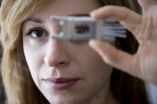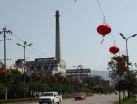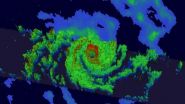(Press-News.org) Northeastern University professor of pharmaceutical sciences, Tania Konry, has developed a single instrument that can conduct a wide range of biological scans in a fraction of the time and cost of industry standard equipment. That's because it uses considerably less material and ultra-sensitive detection methods to do the same thing.
Currently, researchers face enormous time constraints and financial hurdles from having to run these analyses on a regular basis. Hundreds of dollars and 24 hours are what's required to scan biological materials for important biomarkers that signal diseases such as diabetes or cancer. And suppose you wanted to monitor live cancer cells. For that you'd have to use an entirely different method. It takes just as long but requires a whole other set of expensive top-end instrumentation. Want to look at bacteria instead? Be prepared to wait a few days for it to grow before you can get a meaningful result.
Konry's creation, ScanDrop, is a portable instrument no bigger than a shoebox that has the capacity to detect a variety of biological specimen. For that reason it will benefit a wide range of users beyond the medical community, including environmental monitoring and basic scientific research.
The instrument acts as a miniature science lab, of sorts. It contains a tiny chip, made of polymer or glass, that is connected to equally tiny tubes. An extremely small-volume liquid sample-whether it's water or a biological fluid such as serum-flows in one of those tubes, through the lab-on-a-chip device, and out the other side. While inside, the sample is exposed to a slug of microscopic beads functionalized to react with the lab test's search parameters. For example, one type of bead could be covered with antibodies that selectively bind to e. coli to test water quality. Other types could detect cancer biomarkers or bind to the tetanus virus to test for immunity.
"It can be any biological agent," Konry said. "We take the same approach."
The beads fluoresce when the specific marker or cell in question has been detected; from there, an analysis by ScanDrop can provide the concentration levels of that marker or cell.
Because the volumes being tested with ScanDrop are so small, the testing time dwindles to just minutes. This means you could get near-real time measures of a changing sample-be it bacteria levels in a flowing body of water or dynamic insulin levels in the bloodstream of a person with diabetes.
Konry noted that not only are other testing mechanisms prohibitively expensive, but they are also fairly useless in the field-particularly in remote areas-because the instruments are large and require long times for analysis. By comparison, ScanDrop's portability makes it much more functional and efficient in the field.
Her team recently joined forces with a group at the University of California at Berkeley, which developed software that can remotely control ScanDrop's activity from anywhere on the planet. This functionality could be particularly useful when the instrument is set up in the field to continuously monitor the environment. The achievement, Konry said, adds yet another level of efficiency to the system. The research was recently reported in the journal PLOS ONE.
INFORMATION:
Biological testing tool, ScanDrop, tests in fraction of time and cost of industry standard
2014-03-26
ELSE PRESS RELEASES FROM THIS DATE:
Natural history must reclaim its place
2014-03-26
Support in developed countries for natural history—the study of the fundamental nature of organisms and how and where they live and interact with their environment—appears to be in steep decline. Yet natural history provides essential knowledge for fields as varied as human health, food security, conservation, land management, and recreation. In the April issue of BioScience, a group of scientists from institutions across North America details examples supporting their conviction that a revitalization of the practice of natural history will provide important benefits for ...
Coal plant closure in China led to improvements in children's health
2014-03-26
Decreased exposure to air pollution in utero is linked with improved childhood developmental scores and higher levels of brain-derived neurotrophic factor (BDNF), a key protein for brain development, according to a study looking at the closure of a coal-burning power plant in China led by researchers at the Columbia Center for Children's Environmental Health at the Mailman School of Public Health.
The study is the first to assess BDNF and cognitive development with respect to prenatal exposure to polycyclic aromatic hydrocarbons (PAH), a component of air pollution commonly ...
Resistance is not futile
2014-03-26
Researchers with the U.S. Department of Energy (DOE)'s Joint BioEnergy Institute (JBEI), a multi-institutional partnership led by Berkeley Lab, have identified the genetic origins of a microbial resistance to ionic liquids and successfully introduced this resistance into a strain of E. coli bacteria for the production of advanced biofuels. The ionic liquid resistance is based on a pair of genes discovered in a bacterium native to a tropical rainforest in Puerto Rico.
"We identified two genes in Enterobacter lignolyticus, a soil bacterium that is tolerant to imidazolium-based ...
NASA catches Gillian as a super-cyclone before quickly dissipating
2014-03-26
VIDEO:
On March 23 when the TRMM satellite passed over Gillian, it was at hurricane-force. TRMM revealed intense storms in a well-defined eye wall producing rain at a rate of over...
Click here for more information.
Tropical Cyclone Gillian was near peak intensity when the Tropical Rainfall Measuring Mission or TRMM satellite passed overhead and saw towering thunderstorms and very heavy rainfall in the storm on March 23. By March 26, Gillian had weakened to a tropical storm and ...
Rice U. study: Don't shop for travel at work
2014-03-26
HOUSTON – (March 26, 2014) –It is probably not a good idea to shop for leisure travel from the office during business hours, according to a new study from Rice University and Iowa State University.
Using data from a major online hotel reservation site, the study examined the quality of the hotel that consumers chose for their vacations and subsequently how satisfied they were with their stay. They found that consumers who traveled farther and made reservations during business hours were more likely to select higher quality hotels but were less satisfied after their stay. ...
Dark energy hides behind phantom fields
2014-03-26
Quintessence and phantom fields, two hypotheses formulated using data from satellites, such as Planck and WMAP, are among the many theories that try to explain the nature of dark energy. Now researchers from Barcelona and Athens suggest that both possibilities are only a mirage in the observations and it is the quantum vacuum which could be behind this energy that moves our universe.
Cosmologists believe that some three quarters of the universe are made up of a mysterious dark energy which would explain its accelerated expansion. The truth is that they do not know what ...
Albert Einstein College of Medicine researchers present at AACR Annual Meeting symposia
2014-03-26
March 26, 2014 – (BRONX, NY) – From uncovering the role nerve cells play in metastasis to identifying new cancer-causing genes, researchers at Albert Einstein College of Medicine of Yeshiva University made notable advances in the understanding and potential treatment of cancer during the past year.
Several Einstein faculty members and students will present their recent research at the American Association for Cancer Research (AACR) Annual Meeting, taking place in San Diego April 5-9, 2014. Among the presentations are those during major and mini symposia:
Gene Regulation ...
Gout isn't always easy to prove: CT scans help catch cases traditional test misses
2014-03-26
Rochester, Minn. — Gout is on the rise among U.S. men and women, and this piercingly painful and most common form of inflammatory arthritis is turning out to be more complicated than had been thought. The standard way to check for gout is by drawing fluid or tissue from an affected joint and looking for uric acid crystals, a test known as a needle aspirate. That usually works, but not always: In a new Mayo Clinic study, X-rays known as dual-energy CT scans found gout in one-third of patients whose aspirates tested negative for the disease. The CT scans allowed rheumatologists ...
Preoperative PET cuts unnecessary lung surgeries in half
2014-03-26
Reston, Va. (March 21, 2012) – New quantitative data suggests that 30 percent of the surgeries performed for non-small cell lung cancer patients in a community-wide clinical study were deemed unnecessary. Additionally, positron emission tomography (PET) was found to reduce unnecessary surgeries by 50 percent, according to research published in the March issue of the Journal of Nuclear Medicine.
PET imaging prior to surgery helps stage a patient's disease by providing functional images of tumors throughout the body, especially areas where cancer has spread, otherwise known ...
Health concerns swirl around electronic cigarettes
2014-03-26
With sales of electronic cigarettes, or "e-cigarettes," on the rise and expected to hit $1.5 billion this year, concerns over potential health risks of using the trendy devices are also gaining momentum and political clout. An article in Chemical & Engineering News (C&EN), the weekly magazine of the American Chemical Society, delves into what scientists and regulators are doing about e-cigarettes, which are now being cleverly marketed under more appealing names such as hookah pens and vape pipes.
The battery-powered devices deliver an inhalable vapor, with or without ...




